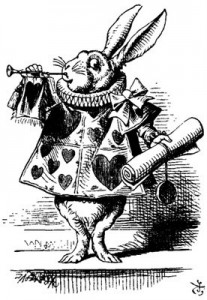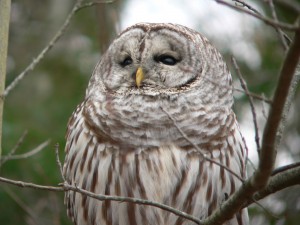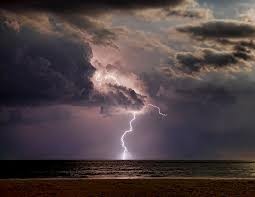The Legends and Symbols
NATIVE AMERICAN MYTHICAL CREATURES
The homeland of the Abenaki Indians, which they called Ndakinna (our land), once covered most of northern New England, southern Quebec and the southern Canadian Maritimes. Those that settled in Maine were known as the Eastern Abenaki and consisted of such tribes as the Penobscot, Kennebec, Arosaguntacook, Pigwacket and/or Pequawket.[1] The Abenaki have a rich tradition of storytelling and it is from their folklore that two of the spirits depicted in MATEGUAS ISLAND are derived. These are Mateguas himself and the Mskagwdemos or swamp hag.
MATEGUAS, GOD OF THE DEAD

Mateguas (also known in Ojibwe as Jiibayaabooz) was in Abenaki legend the ruler of the Land of the Dead. His name means “Spirit Rabbit” or “Ghost of Rabbit”.[1] Tales of the Rabbit in life are filled with portents that are both mystical and spiritual and he was said to have been the first medeoulin (shaman) and founder of the Midewiwin (Grand Medicine Society). [2]
THE MSKAGAWDEMOS (Muh-skog-day-moose)
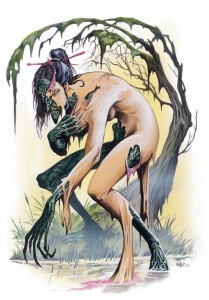
The Mskagawdemos is a swamp woman or hag who appears in many Native American legends, including the Abenaki. She is portrayed as a ghost who lives in swamps and uses mournful cries for help to lure victims to her. Anyone who answers her will be lost in the swamp and/or killed. According to some tales she is a malevolent spirit luring children to her so she can eat them. However, other myths paint her as the ghost of a childless woman enticing the little ones to her out of loneliness only to have them die when she touches them.[3] As for her physical description, most of what I used in MATEGUAS ISLAND comes from legend, however, I have taken some liberties possibly depicting her as more menacing than is described in the literature.
GLOOSKAP and MALSUMIS
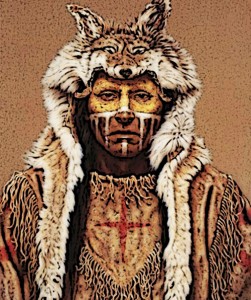
In RETURN TO MATEGUAS ISLAND, we are introduced to two additional Abenaki deities, Glooskap and Malsumis. These spirits are twin brothers and are the sons of Tabaldak (The Owner) who created them from the dust of his body. Representing the duality of nature, Glooskap personifies all that is good in the world while Malsumis’ only desire is to bring pain and suffering.
THE AGLEBEMU

The Aglebemu (giant frog) is depicted in Wabanaki legend as a “lake monster” who was defeated in combat by Glooskap and turned into a bullfrog. Also called a “mitche-hant” or evil creature, the frog is more prominently seen in legends of the Penobscot, Maliseet, and Passamaquoddy tribes. In GHOSTS OF MATEGUAS this creature seeks to destroy Karen and, in later chapters, Terri. Note,as will the other legends used in the series, I have made this creature much more hideous and terrible than is depicted in the literature
[1] Wikipedia, the free encyclopedia, http://en.wikipedia.org/wiki/Abenaki_people (Sept 2013)
[2] Wikipedia, the free encyclopedia, http://en.wikipedia.org/wiki/Jiibayaabooz (Sept 2013)
[3] Native Languages of the Americas, http://www.native-languages.org/swamp-woman.htm (October 2013)
ANIMALS AND SYMBOLS
In MATEGUAS, Karen is plagued by strange visions of rabbits and it is a rabbit that first shows her the trail that leads deep into the woods. In my novel, this rabbit symbolizes Mateguas, God of the Dead. However, in other Native American cultures, most notably Algonquin, there is the myth of a Giant Rabbit who was the master of all animals and instructed humans in the arts of hunting and fishing. Like Mateguas, this rabbit spirit taught the tribes their religious rites and schooled them in the interpretation of dreams.[4] In other Algonquin legends, the rabbit is a sly trickster, who could change his shape at will.[5]
Both of these alternative Algonquin interpretations of the rabbit fit nicely in with the storyline of Mateguas and his ability to shape-shift figures prominently in the story.
In most Native American cultures the owl is a symbol of death and hearing its hoot is considered an unlucky omen. These majestic birds were believed to carry messages or supernatural warnings to humans who have broken tribal taboos. The owl has also been associated with ghosts and the circles around their eyes believed to be the fingernails of ghosts.[6] In MATEGUAS, Karen is plagued and threatened by owls and in RTM, the owl takes on an even more menacing role.
The Waning Crescent Moon
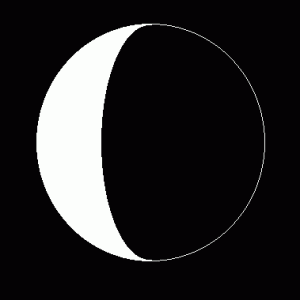 As Madge Parker tells Karen, the waning crescent moon is, indeed, also called “the old moon” and is believed to symbolize the all knowing. In paganism, this phase of the moon indicates a good time for spells that banish, release and reverse. It is also a time to break bad habits and end bad relationships.[7]
As Madge Parker tells Karen, the waning crescent moon is, indeed, also called “the old moon” and is believed to symbolize the all knowing. In paganism, this phase of the moon indicates a good time for spells that banish, release and reverse. It is also a time to break bad habits and end bad relationships.[7]
In my tale, I have made this phase of the moon a symbol of Mateguas, God of the Dead which is, indeed, a fiction.
The lightning bolt has powerful meaning in MATEGUAS ISLAND. In mythology in many cultures, including some Native American, male gods hurl the lightning bolt to fertilize the earth and/or its creatures. The Navajo linked it to the Thunderbird, symbol of salvation and the divine.[8] In keeping along these lines, Mayan mythology characterizes the lightning bolt as the masculine manifestation of fertilizing energy.[9]
[4] http://aboutnativeamericans.blogspot.com/2012/03/about-algonquin-myth-of-michabo.html, 01/02/14
[5] http://www.godchecker.com/pantheon/native_american-mythology.php?deity=MANABOZHO, 01/02/14
[6] http://www.native-languages.org/legends-owl.htm, 01/02/14
[7] http://www.thewhitegoddess.co.uk/moon_phases/waning_moon.asp, 01/02/14
[8] http://www.crossroad.to/Books/symbols1.html, 01/02/14
[9] Barbara Tedlock,”Mayan Shamanism” in Mariko Namba Walter, Eva Jane Neumann Fridman. eds., Shamanism: An Encyclopedia of World Beliefs, Practices, and Culture, Volume 1, (Santa Barbara, CA: ABC-CLIO, Inc., 2004) pp. 431-435.

